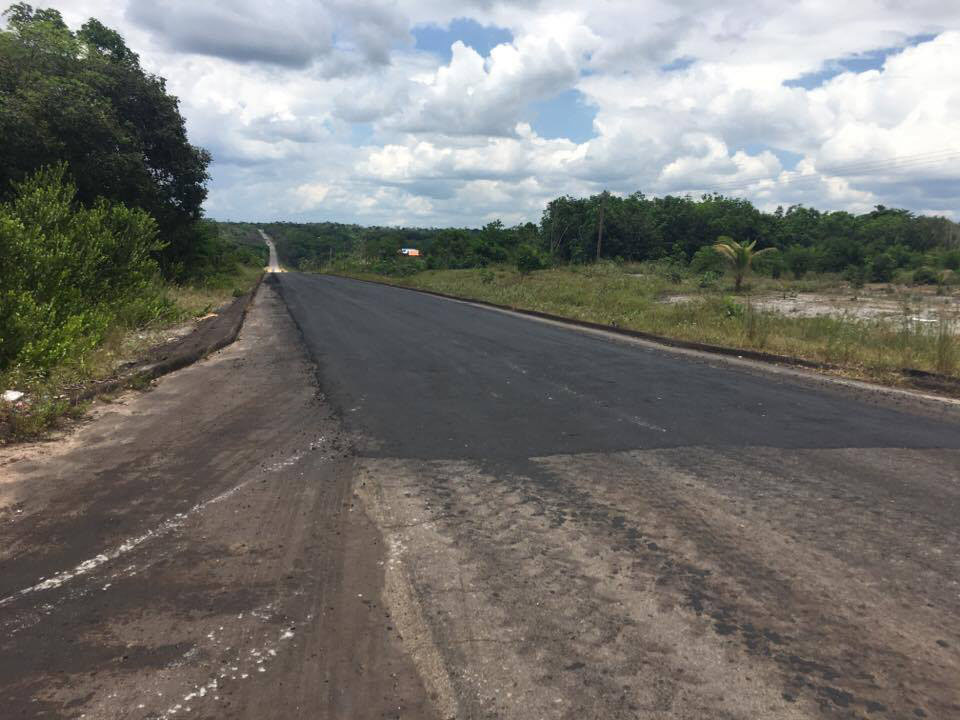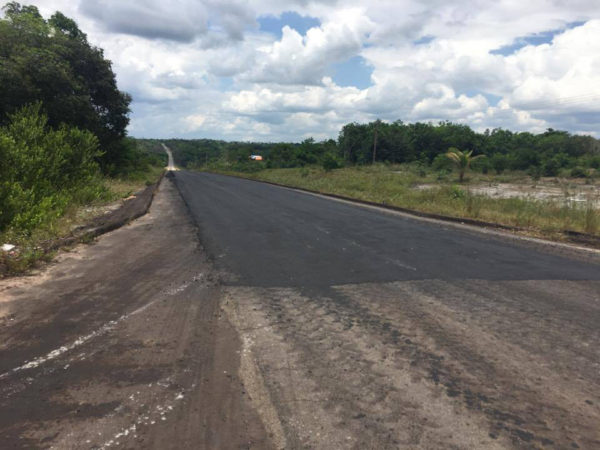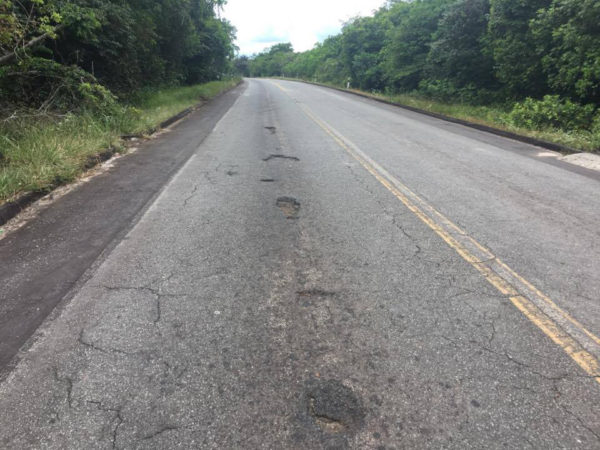A damaged section of the Linden-Soeskdyke High-way near Bamia Creek, considered dangerous because of several recent road fatalities, was patched yesterday and Region Ten Chairman Renis Morian said there is need for a regulatory body to ensure that overweight, heavy-duty trucks are not traversing the road.
Two weeks ago, Abeola Gomes was the most recent casualty of the highway after the vehicle she was travelling in, PTT 1325, lost control on hitting a depression and toppled several times. Prior to that, on June 25, Ishaan Caines, a police constable, died around the same area after losing control of his vehicle and on May 2, Rawle Adams also lost control of his vehicle in the same vicinity. Numerous other accidents have been recorded around the Bamia Creek area.
Morian said that part of the highway around Bamia Creek, which has been the hotspot for several accidents over the past year was recapped by the Ministry of Public Infrastructure. He explained that there was a “bump” in the road that was causing vehicles to flip over. “People got the tendency when they are coming off a hill to accelerate and when you pick up speed and hit that bump then your vehicle is going to lose control,” he said, lauding the ministry for attending to the road.
Morian explained that while it was difficult to recap the road, it would not solve the problem since it has structural problems.
“There is a need for a regulatory body. We at the RDC [Regional Democratic Council] could shout but we don’t have the legal [authority to police] the highway. It has to be a collaboration with the Ministry of Public Infra-structure and the police to make certain that the weight of the trucks are right,” Morian pointed out, stating that the road was not built to handle the amount of weight that is being placed on it every day.
“Prior to now, the timber trucks used to go down by river. [But] you can’t go and tell those truck men who are getting down to Georgetown in less than two hours to go back and use the river which will take more than 24 hours,” he said. He said the regulatory body would ensure that the trucks have the right amount of weight while travelling on the road.
Meanwhile, drivers who frequent the road expressed their desire to have it completely resurfaced.
Stabroek News travelled along the road yesterday and found it riddled with cracks and depressions, stretching from Soesdyke all the way to the beginning of Linden. Sporadic drops and bumps covered the entire stretch and even small potholes at some points.
“It’s a high-speed highway and they shouldn’t have those little faults, ’cause is those small things that can cause an accident. Nobody don’t drive slow on the road because the limit is 100 and is a long highway especially when you got to reach town,” said Mark Jacobs, who drives to and from Linden every day.
“Even when you know the road them bumps does ketch you by surprise and because you driving so fast you does lose control of your vehicle sometimes,” he pointed out.
Since the highway is frequented by such a large amount of traffic, he stated, the authorities should ensure that it is in “perfect condition.”
Other drivers shared the same sentiments about the highway and expressed the need for lights on the road. “The place does be real dark in the nights and them vehicles does just speed pass like nothing. Some-times them bush truck does got so bright lights that you can’t even see anything,” another driver pointed out.
Morian pointed out that it is the structure of the road that needs attending to and a simple resurfacing would not address the problems. “What you see today and what you see tomorrow on the road are very different and right now there are a number of areas that are unstable on the highway because of the big trucks,” he said.
“While you might not have the money to fix the entire road, you still need to do the checks and fix the small problems because once the curb wall breaks you can have a large hole in less than 10 minutes,” he added.
He said the heavy trucks “drive close to the curb and if you check closely it’s that part of the road that’s severely damaged and has the depressions.”
Morian pointed out that the ministry needs to ensure that the highway is constantly checked for damage. “There is a need to have people who are doing frequent checks. It’s an old road and was not built for the amount of traffic that traverses it daily… even if you have engineering students or engineers who just graduated doing the checks,” he added.









